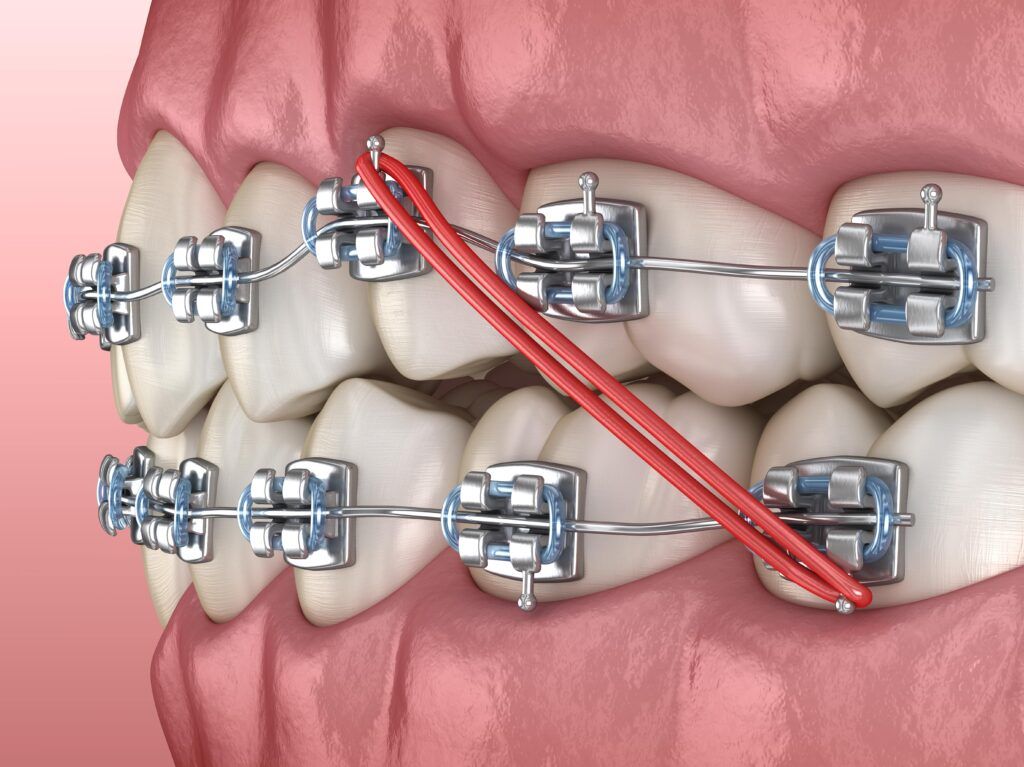Locating the Right Cumming Orthodontist for Your Braces and Aligners Needs
Locating the Right Cumming Orthodontist for Your Braces and Aligners Needs
Blog Article
Comprehensive Overview to Orthodontics Procedures for Remedying Oral Imbalances
Recognizing the intricacies of each treatment, including their mechanisms, benefits, and possible drawbacks, is essential in making informed choices regarding one's orthodontic therapy. As we navigate with the detailed guide to orthodontic treatments for dealing with dental misalignments, the intricate details of each method will certainly unfold, losing light on the path towards a useful and unified dental alignment.
Orthodontic Procedures Introduction

Along with clear aligners and standard dental braces, orthodontists may additionally suggest various other treatments like headgear, palatal expanders, or retainers to attend to specific positioning concerns (cumming aligners). These procedures are customized per client's distinct needs and may include a combination of therapies to attain the wanted outcomes. Regular modifications and tracking are vital components of orthodontic therapy to guarantee progression is on track and to make any kind of required alterations along the road. By undergoing orthodontic procedures, people can not only achieve a straighter smile yet also improve their general dental wellness and function.
Typical Dental Braces: Exactly How They Function
When thinking about orthodontic treatments for dental misalignments, conventional braces stand out as a tried and true technique for remedying teeth placing. Typical braces consist of braces, cords, and bands that interact to use continuous stress on the teeth, gradually moving them into the wanted positioning. The brackets are affixed to the teeth using an unique adhesive, and the cords are threaded with the braces. By adjusting the tension of the cables, orthodontists can control the instructions and force used to each tooth, leading them into correct alignment with time.
One secret facet of how typical dental braces work is the procedure of bone renovation. As pressure is put on the teeth with the dental braces, the bone surrounding the teeth is reshaped to support the brand-new tooth positions. This makeover is vital for the lasting security of the remedied alignment. Patients will certainly require normal modifications at the orthodontist's office to make sure the dental braces remain to apply the right pressure for efficient teeth activity.
Undetectable Aligners: Benefits And Drawbacks
Unseen aligners use a practical and very discreet choice to traditional dental braces for remedying dental imbalances. These clear, tailor-made trays are virtually unnoticeable when used, making them an attractive option for people seeking a more cosmetically pleasing orthodontic therapy. One of the key advantages of undetectable aligners is their removability, allowing for much easier upkeep of oral hygiene compared to typical dental braces. Clients can get rid of the aligners here before consuming or cleaning their teeth, lowering the danger of food obtaining stuck in the home appliance and simplifying the cleaning procedure.

Surgical Orthodontic Options
Surgical interventions in orthodontics present feasible alternatives for resolving complex oral imbalances that may not be efficiently solved through conventional orthodontic treatments. While unnoticeable aligners and typical dental braces can remedy many orthodontic concerns, particular instances need surgical treatment to accomplish optimal outcomes. Surgical orthodontic choices are generally advised for severe malocclusions, significant jaw disparities, and situations where the underlying bone structure needs adjustment to accomplish correct alignment.
One usual medical orthodontic procedure is orthognathic surgical treatment, which includes repositioning the jaws to fix functional problems such as problem talking or eating. This surgical procedure is frequently done in collaboration with an orthodontist that assists align the teeth prior to and after the procedure. Surgical orthodontics may additionally include procedures to subject influenced teeth, get rid of excess gum tissue, or reshape the jawbone to create an extra harmonious face profile.
Before taking into consideration medical orthodontic choices, people undergo a thorough examination to figure out the need and prospective benefits of such interventions. cumming invisalign. While surgery may appear challenging, it can dramatically enhance both the feature and looks of the smile in cases Look At This where conventional orthodontic treatments fail
Retainers and Post-Treatment Care

Post-treatment treatment entails following the try this site orthodontist's directions diligently. This might include correct dental health methods, participating in follow-up appointments, and putting on the retainers as recommended. Failure to abide by post-treatment care instructions can lead to regression, where the teeth progressively return towards their initial positions. Constant retainer wear, great dental hygiene, and routine oral examinations are vital for maintaining the results accomplished through orthodontic surgery and making certain the long-lasting stability of the dealt with oral positioning.
Conclusion
To conclude, orthodontic treatments provide various alternatives for fixing oral imbalances. Traditional braces use steel braces and cables to shift teeth into appropriate placement. Undetectable aligners supply an even more discreet choice yet might not appropriate for all cases. Surgical orthodontic alternatives are readily available for a lot more extreme misalignments. Retainers are commonly used post-treatment to maintain the new placement. In general, orthodontic procedures can properly improve dental health and aesthetic look.
As we navigate with the comprehensive overview to orthodontic treatments for dealing with oral imbalances, the complex details of each approach will unfold, shedding light on the path towards a practical and unified oral alignment. - invisalign
One of the most common orthodontic therapies is the use of braces, which are composed of steel braces and wires that use gentle stress to gradually change teeth into the desired setting.When taking into consideration orthodontic treatments for dental imbalances, traditional dental braces stand out as a time-tested approach for fixing teeth placing. In addition, unnoticeable aligners may not be appropriate for complex orthodontic issues that call for more significant teeth motion, as they are commonly advised for moderate to moderate situations. Retainers are custom-made orthodontic tools developed to hold teeth in their corrected settings after the completion of orthodontic therapy.
Report this page